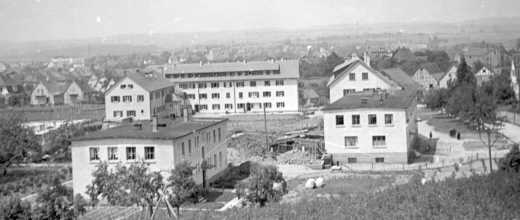The prisoners, their imprisonment and working conditions
A large part of the prisoners came from the concentration camp Dachau and its outpost, the others from the concentration camps at Ausschwitz, Flossenbürg and Sachsenhausen. Most people in the concentration camp were victims of persecution as a result of the prevailing racist climate, or they were imprisonned because of their dissenting political or religious attitudes. Also among them were deserters, people imprisoned by force and prisoners of war. The terms “criminals” and “social misfits” were a justification for the concentration camp system. In Leonberg were a lot of Jews, but also Sinti and Roma. In the spring of 1944, there were some hundred people in the Leonberg concentration camp. Towards the end of the war, it accommodated over 3,000 men. The food rations were so low that hunger was a constant, tormenting companion. The prisoners, who were emaciated, were driven to work in the “Engelbergtunnel” night and day. There they had to work in shifts, 12 hours a day, 7 days per week. Smaller groups of prisoners were also used for other works: they had to defuse unexploded bombs after air raids, they had to do building work, they had to work in quarries and tunnels.
Especially since December 1944, the prisoners suffered from catastrophic imprisonment conditions and diseases like typhoid caused by overcrowding, malnutrition and insufficient sanitary facilities. In Leonberg, the death of 389 concentration camp - prisoners has been proven. But actually far more died. Many of the weakened, ill and emaciated men were deported to typical “death camps”, like Vaihingen/Enz, Dachau and Bergen-Belsen. It is reported that some prisoners attempted to escape several times. But most of them were captured again. There were only three prisoners who were hanged in Leonberg or elsewhere, whose names are known. There was also one prisoner who was shot while “on the run”. Only a few days before the French troops reached Leonberg, and then consequently could have freed the remaining 2,700 captives, the prisoners were sent on “death marches” and “death journeys” to Bavaria. Many of them died.
